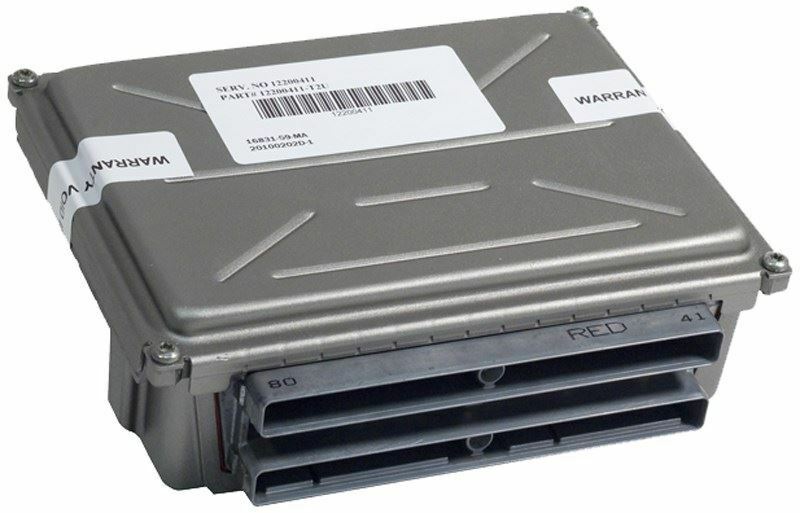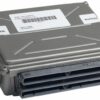Restore Peak Performance to Your GM Truck or Van
If you’re dealing with frustrating engine problems in your 2003 GMC Sierra 3500—like a persistent check engine light, rough idling, or sudden stalling—the root cause is often a failing Powertrain Control Module (PCM). As a technician with over two decades of experience under the hood, I’ve seen firsthand how a faulty PCM can cripple an otherwise solid vehicle. This isn’t just a part; it’s the central command center for your engine and transmission. Our replacement PCM, part number 12578127, is the definitive solution to get your truck running reliably again.
What sets this module apart is our professional programming service. Before we ship it, we flash the unit with the latest official GM software updates, specifically calibrated to your vehicle’s unique Vehicle Identification Number (VIN). This critical step ensures seamless communication between all vehicle systems, optimizes fuel economy and emissions, and eliminates the need for an expensive trip to the dealership for programming. You get a component that is truly ready to install right out of the box.
Common Signs of a Failing PCM
- ✔ Unexplained Check Engine Light (CEL) illumination
- ✔ Stored diagnostic trouble codes (DTCs) like P0601 (Internal Control Module Memory Check Sum Error) or other communication errors.
- ✔ Engine stalling, stumbling, or hesitating during acceleration
- ✔ Noticeable decrease in fuel mileage
- ✔ Harsh or erratic automatic transmission shifting
- ✔ Complete no-start condition where the engine cranks but won’t fire up
- ✔ Intermittent issues that worsen as the engine warms up
A Technician’s Notebook: The Phantom Stall
I remember a 2003 Avalanche 2500 with the 8.1L V8 that came into the shop with a maddening problem. It would run perfectly fine for 20-30 minutes, but after reaching full operating temperature and sitting for a few minutes (like after fueling up), it would refuse to restart or would stall immediately. No consistent codes were being thrown, just a few random communication faults. After chasing down wiring and sensors, we focused on the PCM. On these trucks, the PCM is mounted under the battery tray, where it’s susceptible to heat soak and corrosion. We swapped in a known-good module, and the problem vanished. The original PCM’s internal processor was failing under heat stress—a classic failure mode for this generation of controller. This is precisely the kind of issue our pre-programmed 2003 Sierra 3500 PCM is designed to solve permanently.
A Straightforward Guide to Installation
Replacing the PCM on most compatible trucks and vans is a job you can handle in your own driveway with basic hand tools. Follow these steps for a successful installation.
- Safety First: Always disconnect the negative terminal from your vehicle’s battery and secure it away from the post to prevent any accidental power surges.
- Locate the PCM: On most Sierra, Silverado, Suburban, and Avalanche models, the PCM is located on the driver’s side of the engine bay, underneath the battery tray. For Express and Savana vans, it’s typically in the LH rear of the engine compartment.
- Remove Connectors: Carefully unlatch and remove the electrical harness connectors from the old PCM. Inspect the terminals for any corrosion or damage. Clean them with electrical contact cleaner if necessary.
- Swap the Module: Unbolt the old PCM from its mounting bracket. Install the new module in its place and secure the mounting bolts.
- Reconnect Everything: Firmly plug the harness connectors into the new PCM until they click into place. Reconnect the negative battery terminal.
- Perform Security Relearn: Your vehicle’s anti-theft system may need to be relearned. This is a simple procedure: Turn the key to the ‘ON’ position for 10-15 minutes, then ‘OFF’ for 10 seconds. Repeat this cycle 3 times. On the fourth cycle, the vehicle should start.
Guaranteed Fitment for Your GM Vehicle
This module is a direct replacement for service number 12578127 and is compatible with a wide range of GM vehicles. Please verify your model and engine options below. This part is a direct fit for the following vehicles:
- ✔ 2003 GMC Sierra & Chevrolet Silverado 1500 (4.3L)
- ✔ 2003 GMC Sierra & Chevrolet Silverado 2500/3500 (8.1L Gasoline)
- ✔ 2003 Chevrolet Avalanche 2500 (8.1L)
- ✔ 2003 Chevrolet Suburban 2500 & GMC Yukon XL 2500 (8.1L)
- ✔ 2003 Chevrolet Express & GMC Savana Vans (1500/2500/3500)
- ✔ 2003 Chevrolet S10/Blazer & GMC Sonoma/Jimmy (4.3L)
- ✔ 2003 Chevrolet Astro & GMC Safari
- ✔ 2004 Cadillac CTS (Base, ID 12581565)
- ✔ 2004 Chevrolet Corvette (ID 12581565)
This unit also interchanges with part numbers: 12581565, 12570557, 12570558, 12576106, 12576869, 88864822, and 89017733. By purchasing our 2003 Sierra 3500 PCM, you’re getting a reliable, fully updated component ready to restore your vehicle’s proper function.
Frequently Asked Questions
Why do you need my VIN?
Your Vehicle Identification Number (VIN) allows us to program the PCM with the exact software calibration GM specified for your truck’s engine, transmission, and options. This ensures perfect compatibility and performance without any additional programming required on your end.
Is this a simple plug-and-play installation?
Yes, for the most part. Once you physically install the module, you will need to perform a simple security relearn procedure, which takes about 30 minutes and only requires the vehicle’s ignition key. We provide instructions for this process.
Will this fix my check engine light?
If the check engine light and associated codes (like P0601) are being caused by a faulty PCM, then this replacement part will resolve the issue. It’s crucial to properly diagnose the problem first, as other sensors or wiring issues can also trigger a check engine light.
What is the difference between a PCM, ECM, and ECU?
The terms are often used interchangeably. PCM (Powertrain Control Module) is the most accurate for these GM vehicles as it controls both the engine and transmission. ECM (Engine Control Module) and ECU (Electronic Control Unit) are more generic terms for a vehicle’s computer.
Do I need any special tools to install this?
No special tools are required. Basic hand tools like a socket set and ratchet are all you need to access and replace the module. The most important part is ensuring the battery is disconnected before you begin.


